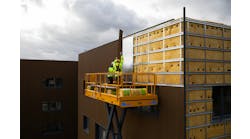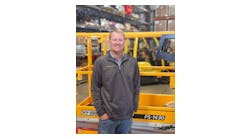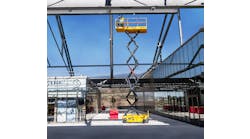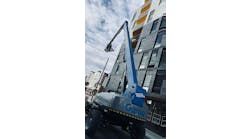But if you have had some, take a good look at what caused them.
I always agreed with the notion that rental companies take a look at the jobsites when they deliver equipment to them. Tony Groat, head of IPAF in the United States and a veteran of decades in the equipment rental business, suggests the first step is to identify hazards, then identify the risks, identify who may be harmed, and how they may be harmed. Then define, document and implement the control measures to lessen those risks.
There are a lot of things you need to look at. The aerial work platform you rent may be working around electrical lines where electrocution can take place. Users may be driving the equipment in locations where they don’t have adequate ground support or in areas with traffic. And they can be in unstable places where there is potential for ejection or falls may occur. Excessive debris or hidden holes can cause danger as well. All these are examples of threats and hazards around the workplace that must be addressed prior to the job beginning.
I remember writing an article about aerial safety a few years back and I interviewed rental companies about what they do when they deliver aerials to jobsites to review that site for potential dangers. I was surprised at a number of companies that just flat-out told me that wasn’t their responsibility. They said that their responsibility was to deliver the equipment and make sure the user is properly familiarized but that it was up to the contractor to assess potential jobsite dangers. I can understand that view, but when a rental customer has an accident on the jobsite, how often do they blame the rental company? And even if they don’t, I don’t think you want to get into these thorny issues with your customers if you want them to continue being your customer for a long time to come. Plus you don’t want accidents to happen, period.
There are the employees who will operate the AWP, there are people walking by, others in the work area, other machines and vehicles that may drive through the area — so many potential risks. You can’t eliminate hazards completely, but you can lower the risks. Some rental companies work with customers to perform risk assessments on jobsites. It’s a value-added service.
So there’s an ongoing practice to looking at hazards on jobsites and also looking at hazards at your own rental center, which is in essence a type of jobsite because you have aerial work platforms being moved around. Just as accidents can happen at a jobsite, so they can happen at your rental company. Is your staff properly trained? Do they use personal fall-protection equipment or do they figure it’s not really necessary because it’s not a real jobsite? Or do they use the old “I’ll only be in it for a minute” argument?
Essentially it’s the employer who is responsible for safety practices. That means you are responsible for all activities involving aerial work platforms at your rental center, all practices involved in the transportation of aerial equipment, and all activities of your staff when they deliver the equipment to the jobsite, plus the activities of service technicians you send to do maintenance and repair on your machines. But any additional identification of potential hazards at a jobsite when you deliver equipment, even if not technically your responsibility according to the letter of the law, could potentially be under your jurisdiction.
Remember that one of the keys to aerial safety involves the maintenance procedures in your shop long before the AWP goes out on a jobsite. There are ANSI standards governing maintenance, inspections, repairs, and the frequency of performing them. Do not take them lightly because if an accident occurs on a jobsite that could be attributed to a malfunction and your service records are not up to date, well, suffice it to say you don’t want to go there.







